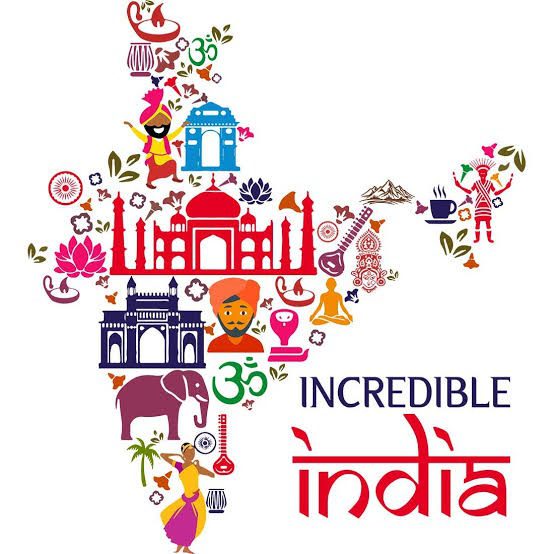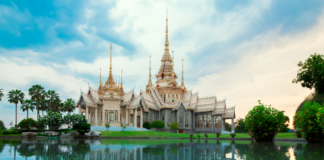Introduction:
India, a land of rich cultural heritage, diverse landscapes, and historical marvels, beckons travelers with an array of destinations that captivate the senses and stir the soul. From the snow-capped peaks of the Himalayas to the sun-kissed beaches of the Andaman Islands, India’s tapestry of wonders is woven with threads of history, spirituality, and natural beauty. In this essay, we will embark on a journey across the vast and enchanting landscape of India, discovering some of the best places to visit that showcase the country’s unique blend of tradition and modernity.
The Majestic Taj Mahal – Agra:
The Taj Mahal, an iconic symbol of love and architectural brilliance, stands majestically on the banks of the Yamuna River in Agra, India. Revered as one of the Seven Wonders of the World, this UNESCO World Heritage Site is a testament to the enduring power of love and the ingenuity of Mughal architecture. Commissioned in 1632 by Emperor Shah Jahan in memory of his beloved wife Mumtaz Mahal, the Taj Mahal is a timeless ode to love. Mumtaz Mahal, the Empress of the Mughal Empire, passed away during childbirth, and Shah Jahan, grief-stricken, vowed to build a monument that would immortalize their love. The construction of the Taj Mahal took over two decades, involving the efforts of thousands of artisans and craftsmen. At the heart of the Taj Mahal’s magnificence lies the profound symbolism of love.
The white marble structure is said to represent the purity of Mumtaz Mahal’s love, while the intricate carvings and calligraphy tell the story of eternal devotion. The four minarets surrounding the main dome not only contribute to the architectural balance but are also believed to symbolize the four corners of the earth, emphasizing the universality of love. The Taj Mahal is set within a meticulously planned garden, known as the Charbagh, inspired by Islamic paradise gardens. The garden is divided into quadrants by pathways and water channels, leading to a central reflecting pool. The symmetry of the garden and its reflection in the pool add to the ethereal beauty of the monument, creating a sense of serenity and balance.
The Spiritual Varanasi:
Nestled on the banks of the sacred Ganges River, Varanasi, one of the oldest continuously inhabited cities in the world, inviting travelers into a realm where spirituality, history, and culture converge. Also known as Kashi and Benaras, Varanasi is a tapestry of traditions, rituals, and ancient wisdom. In this article, we will explore the unique charm and enduring significance of Varanasi, a city that embodies the soul of India. Varanasi is synonymous with spirituality and is considered the spiritual capital of India. Pilgrims and seekers from around the world flock to the city to partake in religious rituals, seek enlightenment, and experience the profound spirituality that permeates the air.
The ghats along the Ganges, especially Dashashwamedh Ghat and Manikarnika Ghat, are epicenters of religious ceremonies, where the ancient practice of Ganga Aarti unfolds, creating a mesmerizing spectacle of light and devotion. The Ganges River holds immense significance in Hinduism, and its waters are believed to cleanse the soul of sins. Varanasi’s ghats serve as platforms for a myriad of rituals, from morning prayers to the cremation ceremonies at Manikarnika Ghat. Pilgrims and visitors often take boat rides along the Ganges to witness the city’s timeless rituals and immerse themselves in the spiritual energy that flows through the river. The ghats of Varanasi, a series of steps leading down to the Ganges, are not merely physical structures but symbolic stairways to the divine. Each ghat has its own story and purpose, whether it’s the tranquility of Assi Ghat or the spiritual vibrancy of Harishchandra Ghat.
The ghats also serve as meeting points, where people gather to engage in philosophical discussions, yoga practices, or simply to witness the ebb and flow of life along the river. Varanasi embodies a sense of timelessness, where ancient rituals seamlessly blend with contemporary life. The city’s narrow alleys, ancient temples, and centuries-old traditions create an atmosphere that transcends the constraints of time. Varanasi is a living testament to the continuity of India’s cultural and spiritual legacy.
The Enchanting Backwaters of Kerala:
For a serene escape into nature’s embrace, the backwaters of Kerala beckon. A network of interconnected rivers, lakes, and canals fringed by lush greenery, the Kerala backwaters offer a tranquil journey through idyllic landscapes. Houseboat cruises allow travelers to witness daily life along the waterways, offering a unique and immersive experience in “God’s Own Country.”
The Royal City of Jaipur:
Known as the Pink City, Jaipur is a jewel in the crown of Rajasthan. Steeped in history and adorned with magnificent palaces and forts, Jaipur offers a glimpse into the royal legacy of the Rajput rulers. The City Palace, Hawa Mahal, and the Amer Fort are architectural wonders that transport visitors to a bygone era of opulence and grandeur.
The Pristine Beauty of Himachal Pradesh:
Nestled in the lap of the Himalayas, Himachal Pradesh is a haven for nature lovers and adventure enthusiasts. The scenic landscapes of places like Manali, Shimla, and Dharamshala offer a retreat from the hustle and bustle of city life. Whether it’s the snow-clad mountains, lush valleys, or vibrant Tibetan culture, Himachal Pradesh invites exploration and rejuvenation.
The Cultural Kaleidoscope of Rajasthan – Udaipur:
Udaipur, the City of Lakes, is a testament to Rajasthan’s regal splendor. Surrounded by azure lakes and dotted with palaces, Udaipur exudes a romantic charm. The City Palace overlooking Lake Pichola, the Jag Mandir, and the intricate architecture of the Jagdish Temple showcase the cultural richness of Rajasthan, making Udaipur a jewel in the desert.
The Enigmatic Hampi:
A UNESCO World Heritage Site, Hampi unfolds the remnants of the Vijayanagar Empire in Karnataka. The surreal landscape is dotted with ancient temples, ruins, and boulders, creating an otherworldly atmosphere. Hampi’s Virupaksha Temple, the Vijaya Vittala Temple, and the Lotus Mahal stand as silent witnesses to the empire’s glorious past, inviting history enthusiasts and curious travelers alike.
Conclusion:
India’s diversity is not only reflected in its culture and traditions but also in its geographical splendor. The best places to visit in India offer a kaleidoscopic journey through history, spirituality, nature, and architectural brilliance. From the grandeur of the Taj Mahal to the tranquility of Kerala’s backwaters, each destination contributes a unique thread to India’s vibrant tapestry. As travelers traverse this land of contrasts, they discover a timeless beauty that leaves an indelible mark on the heart and soul.










